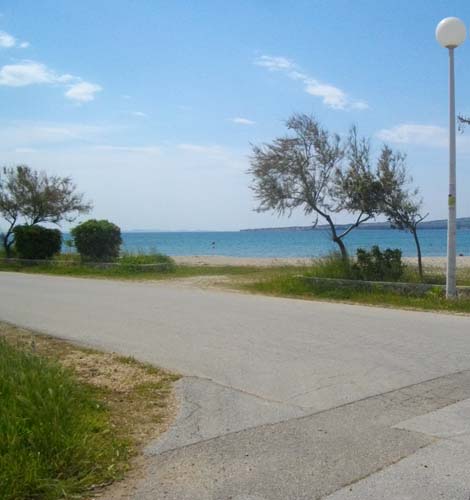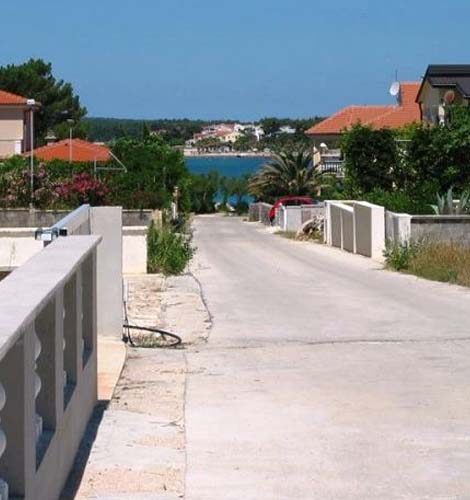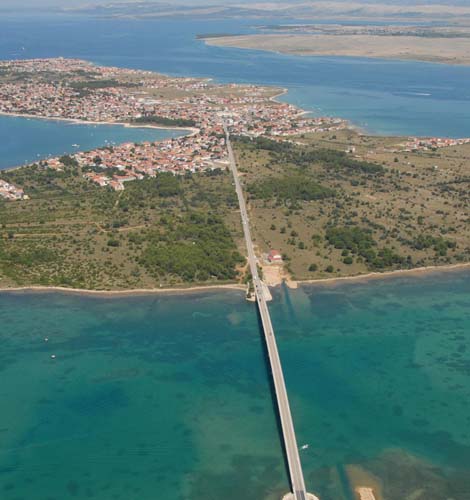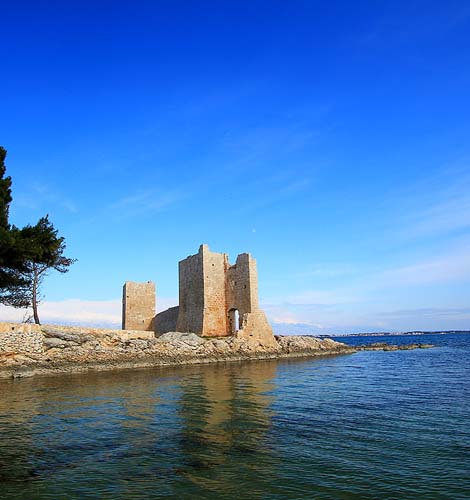Vir is one of the approximately 300 islands of the Zadar archipelago in the Croatian Adriatic. With 22.38 km² area, 10.12 km in length and 4.25 km in maximum width, it is the eighth largest island of the archipelago and the twentieth largest island in Croatia. A bridge about 300 metres long connects it with the Dalmatian coast.
Lučica beach is located on the northern side of the island. The seabed is partly stony, partly sandy. Outside the water, the beach is concreted.
There are benches, an avenue and various areas for sports activities. Near the beach there is a discotheque, a food shop, a café, a bistro and some konobas.
In the summertime, you can buy fresh doughnuts, boiled corn on the cob and ice cream from mobile vendors several times a day. The beach is adjacent to a small marina.
Jado beach is located on the southern side of the island, right by the village of Vir, and has the most important marina on the island. The shore consists of gravel,
in the water of sand. There are several restaurants, bistros, pizzerias, bakeries, pastry shops and small markets in the immediate vicinity. In the evening, strollers like to stroll here.
During the day, many water sports activities can be enjoyed. The annual summer festival "Virsko ljeto" and other performances take place in the square in front of the municipal hall.
The most famous sight on Vir is the Venetian fortress of Kaštelina. It is located on the terrain of Kozjak. The fortress was apparently built in the early 17th century.
The Venetians built the fortress to protect the people of Vir and Nin from the Turks, who were advancing into the area at that time. Part of this fortress is still preserved today.
On the front of the Kaštelina, the coats of arms of the Venetian family of the Governor General of Dalmatia, who administered this area at that time, are still preserved.
On the northern side there is a damaged lion, which is the emblem of the Republic of Venice. The renovation of this landmark took place from May 2001 to April 2002.
The lighthouse was built in 1881 on the southwest coast of the island of Vir. This lighthouse is a typical example of the construction of lighthouses on the eastern Adriatic coast in the 19th century.
The lighthouse is one of 50 similar lighthouses built in this era. Until automation, this lighthouse was occupied.
The workers lived there with their families and ran the daily errands so that the lighthouse always worked. During the Second World War,
the anti-fascist fighters who kept a link between the partisans on the mainland and the island of Molat had their base in this tower.
In 1944, the lighthouse was destroyed by the German occupation forces. After the World War, the lighthouse was renovated and put back into operation in 1950.











